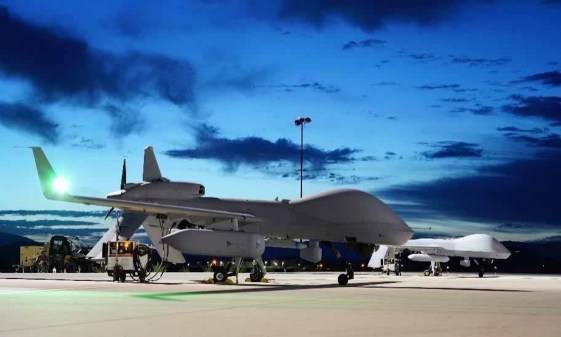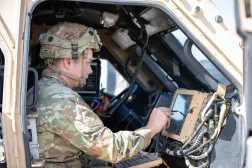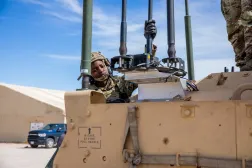New data transport paths are making the Army more resilient and flexible

The Army is looking to make the flow of its data more resilient in the face of complex adversaries seeking to deny it, the service’s top IT official said Thursday.
CIO Raj Iyer noted that a key pillar of the Army’s multi-cloud strategy is getting cloud capabilities to the tactical edge.
“We can’t really solve this cloud problem, this multi-cloud problem, unless we also address the [data] transport issues,” he said during a presentation at the Public Sector Innovation Summit, hosted by VMware and FedScoop. “One of the things that we have to acknowledge right up front is we’re going to be in a highly contested environment. We’re not going to have the bandwidth that we need. It’s going to be interrupted [and] intermittent. It’s going to be contested, and when that happens, your transport now becomes a problem.”
Iyer indicated the importance of partnering with commercial satellite providers and cloud service providers to take advantage of Low-Earth Orbit (LEO) and Medium-Earth Orbit (MEO) satcom capabilities for a more resilient data transport architecture.
“We always thought, hey, what we build and what we own and what we deploy, is far more superior when it comes to supporting the warfighter than what’s commercially available, when honestly, that’s not true anymore,” he said. “That integration of that transport and that backhaul back to more reliable transport using satellite communications is a game changer.”
Leveraging these capabilities make U.S. military forces much more mobile and expeditionary than having to take a lot of tactical server infrastructure or cables with them when they deploy.
“One of the struggles that we’ve had when we deploy to the tactical edge is taking a bunch of hardware with us when we go. That is not making us expeditionary,” Iyer said.
He pointed out that when the 82nd Airborne Division deployed to Poland at the onset of the recent Russian invasion of Ukraine, it had to do so at a moment’s notice.
“If you’re going to be carrying around a whole bunch of infrastructure with you and server stacks and miles and miles of cabling, you can just imagine how cumbersome that is. It hurts our maneuverability when we are stuck to tactical server infrastructure that we need to take with us,” he said. “This is where, again, getting to that low form factor devices that’s connected back to the cloud, being able to establish connectivity through LEO and MEO in minutes rather than hours and days, is a huge game changer. We’ve been able to validate that, like I said, most recently here in Europe.”
Iyer noted that the Army has been able to demonstrate the ability to transition battlefield applications and tools to the cloud, such as the Advanced Field Artillery Tactical Data System, which is a fires command and control tool, and the Command Post Commuting Environment, a web-enabled system that consolidates current mission systems and programs into a single-user interface.
Just a couple of years ago, some observers of the Army might have thought “you’ll never move any tactical application to the cloud, it’s got to be like your traditional business systems and financial systems [and] HR systems,” Iyer said. “Well guess what, we’ve already shown that we can now move these tactical applications to the cloud in forward deployed locations in the hands of the warfighter now, today. That’s real, and so that’s a huge game changer.”
Getting the right data to the right entity at the right time is going to be crucial in future conflicts. Enabling cloud technologies, especially at the edge, is an important aspect to this.
Iyer referenced cloud as a warfighting platform and described the data flowing through it as ammunition.
“What we’ll come to recognize is that our strategic advantage is truly by connecting data across all of these weapons system platforms, getting that as fast as we can to the tactical edge and in the hands of the commander and the soldier for decision making,” Iyer said. “If we can do that, that’s how we’re going to achieve that strategic digital overmatch.”






